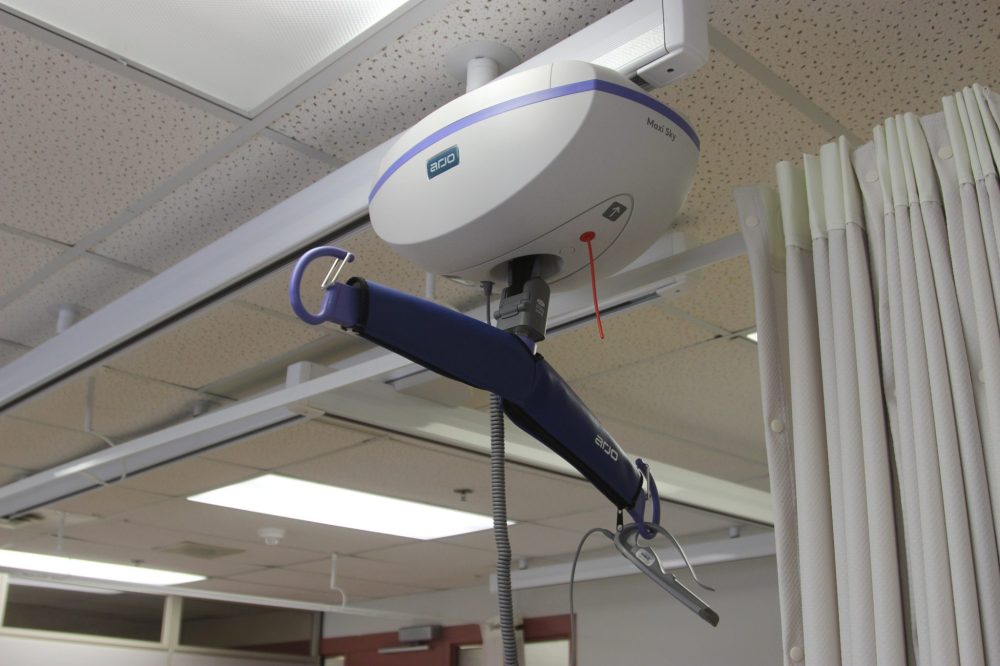Bethesda Foundation funds hospital rehab equipment
Advertisement
Hey there, time traveller!
This article was published 30/04/2023 (715 days ago), so information in it may no longer be current.
Two pieces of donated rehabilitation equipment at Bethesda Hospital are making workers and clients feel spoiled as of late.
A pair of ceiling tracks with remote-controlled mechanics have been installed in the hospital’s rehabilitation services department. The equipment is designed to help lift patients for assessments and treatments, and it’s already showing benefits to both provider and patient.
“It gives us a lot more therapy freedom,” said Britany Cherry, a physiotherapist at Bethesda who gets regular use out of the new equipment.
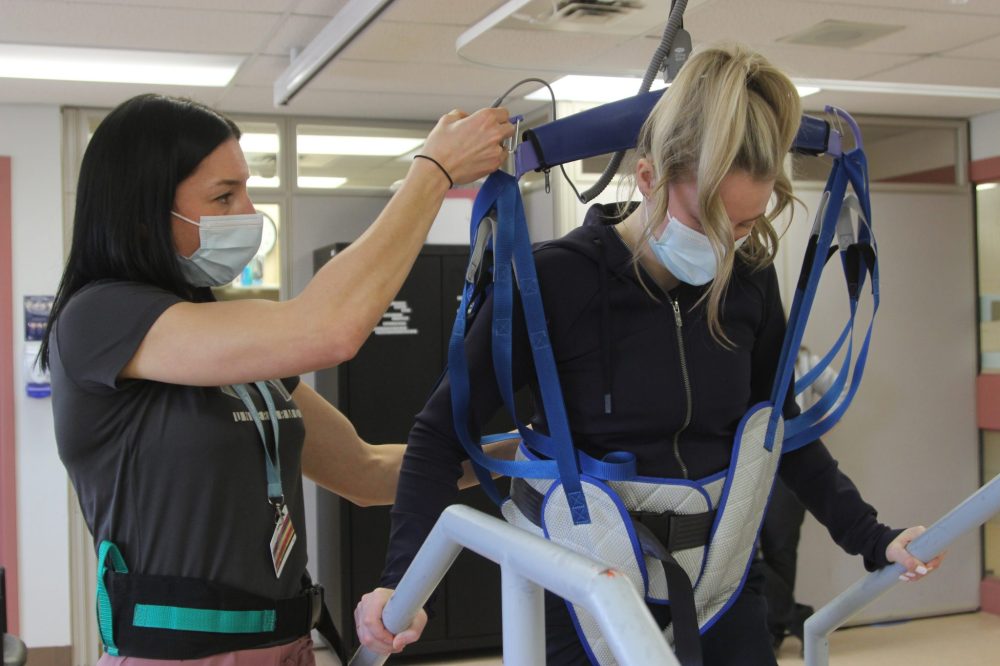
The tracks, which are being used for inpatient and outpatient services at the hospital, is one of few rigs in the province.
Eight years ago when the manager of rehabilitation services at Bethesda saw similar equipment at Riverview Health Centre in Winnipeg, she immediately saw the benefits to it.
“I knew we had to have it,” said manager Diane Reimer.
The price tag of the equipment is marked at approximately $33,000, but the benefit outweighs the cost: physiotherapists and occupational therapists who now use the equipment report there have already been fewer workplace-related injuries to staff and the risk of injury to patients receiving services is lower.
“We were sometimes physically holding them up,” Cherry said. “So now even for ergonomics and safety, it’s been a huge change.”
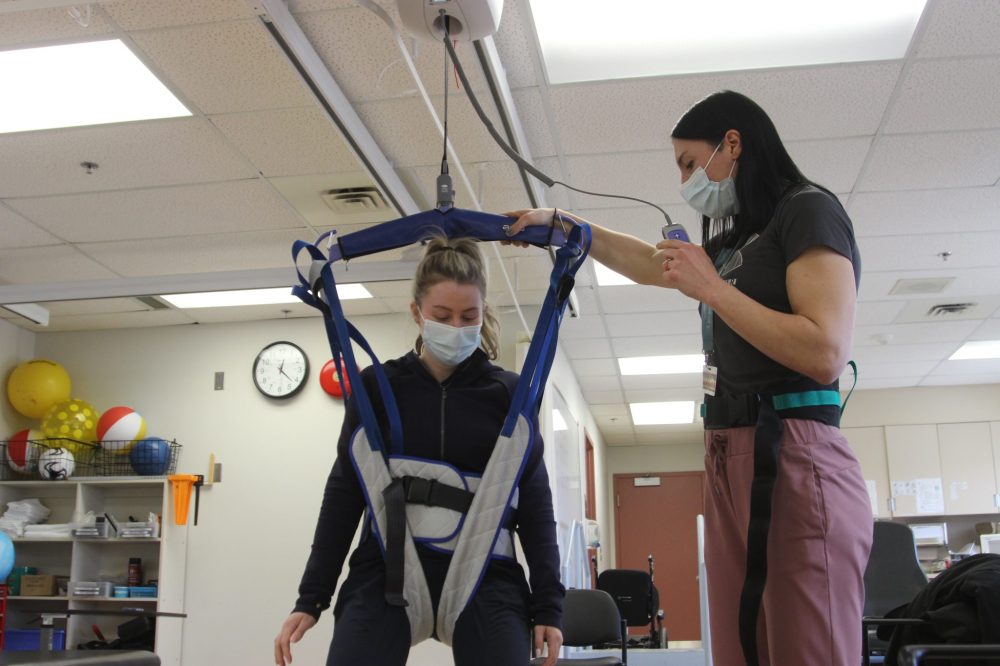
Before, it could take two or three people to mobilize a patient to receive services. Now, the track does some of the work and it only takes one therapist to handle the rest.
“We feel a bit spoiled,” Cherry remarked.
Linda Peters, executive director for Bethesda Foundation, said the donation keeps care for Steinbach residents close to home.
“We want to make sure that the staff here feels like they’re supported,” she said. “And the more supported the staff feels, the better services they can provide for patients.”
While the province funds requests for equipment of this nature at hospitals, it can be a long process with unclear timelines.
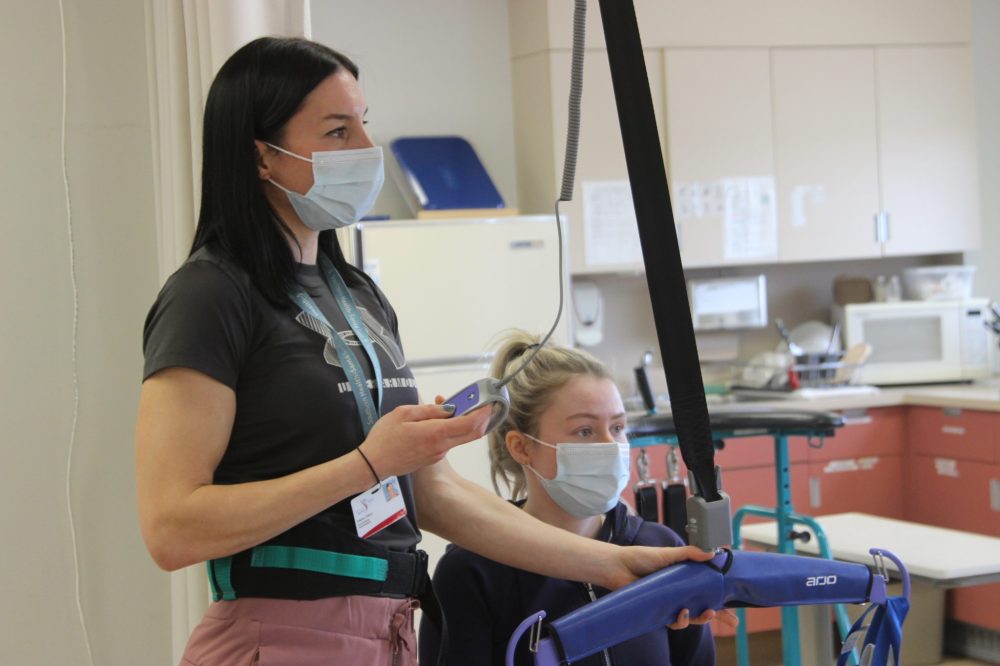
“We just know that if we have some devoted fundraising efforts towards either buildings or equipment or whatever, we can make them happen a lot faster,” Peters said.
“We might have waited years and years to get this if we hadn’t been willing to fundraise for it.”
Prior to the equipment’s installation manual lifts were shared among the unit, but there were few and they were always in use, causing wait times that snowballed into therapists seeing fewer clients per day. Now, care is more efficient.
The walking track gets the most use of the new equipment because it helps patients who are learning to walk again bear more weight on their legs in a safe way, Cherry said.
“It gives those people that are in the in-between stage a chance to try those skills and start forming patterns,” she said.
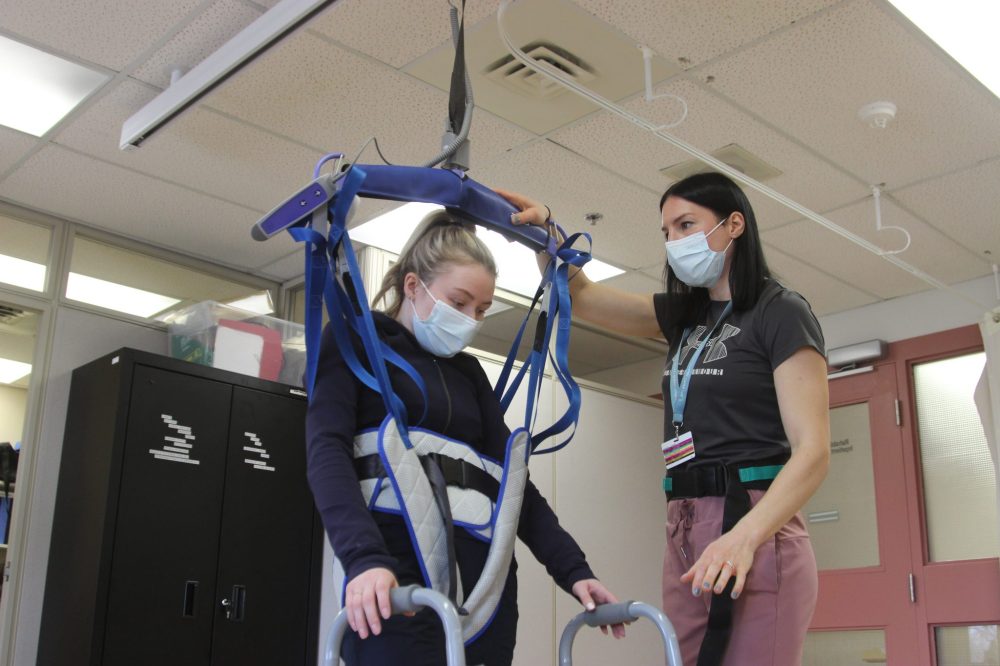
It’s also good for the patient’s wellbeing.
“This gives them the power to get up and go down when they want to,” Reimer said.
“They have greater control over their treatment.”

